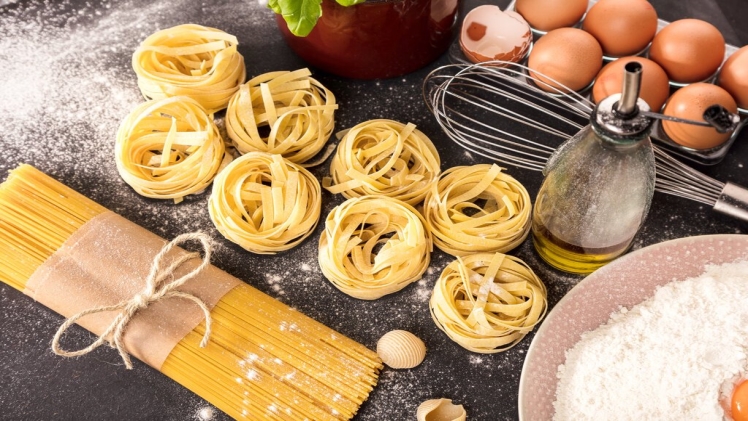When going to an Italian Restaurant, there are many fresh pasta dishes. However, when you buy pasta, should you choose the dried or fresh option? The history of pasta is highly contested with some stating that it arrived in Italy from China with Marco Polo; another place where pasta came from the Arabic region before eventually reaching Italy. Examples of food similar to pasta even exist in records from ancient Greece. However, it is clear that no matter how it arrived in Italy, the Italians immediately took a shine to this simple but nutritious food. Some 310 specific forms of pasta exist known by over 1300 names. These names vary usually based on region.
Dried pasta has been traced back to the 12th century as this form of pasta became very easy to transport and store. However, in modern terms, the first pasta factory license was issued in 1740 in Venice. This established the start of the dried pasta phenomenon. For centuries across Europe and the USA, dried pasta has been the pasta of choice. It can be easily stored and easily transported. Dried pasta also provides simple cooking time and effort compared to making traditional fresh pasta, so which is better?
Dried Pasta
Dried pasta has many upsides, its long shelf life, its simplicity and its variety. The shelf life of dried pasta is the most beneficial upside, allowing pasta eaters to purchase a packet, but having no pressure to eat this all in one go. This is more cost effective, reduces food waste and can reduce the volume of food eaten. The simplicity of dried pasta too is a huge upside; add to boiling water and it is ready. In addition to a sauce, a hearty meal can be made in under 10 minutes. For many modern people this simply serves to benefit as, sadly, some people don’t have the time to spend on making long and elaborate meals. Dried pasta provides the simplicity and speed to create an enjoyable meal. Finally, the variety of dried pasta really begins to highlight why this food has become such a staple across the world. Traditional pasta is made with eggs and flour, but dried pasta can be made with rice flour, legumes or wheat flour. These provide different flavour profiles, different textures and can be a gluten free alternative. Additionally, dried pasta comes in hundreds of shapes and styles. This can be used to hold sauce differently, change the texture and provide an alternative aesthetic appeal. Dried pasta has been a staple of pantries across the globe for years and most likely will remain a staple of cooking for years to come.
Fresh Pasta
Fresh pasta has seen a massive revival across kitchens in the last few years. As people spent more time in their own homes over lockdown and the craving for adventure began, making fresh pasta provides a real taste of authentic Italy. Pasta, at its most simple, is very easy to make; combine egg yolks and typically 00 flour. However, this does require some additional elements, the labour time of making the pasta and usually a rudimental pasta machine to create the unique shapes. The flavour of this fresh pasta is much more authentic and is a clear winner over dried pasta. Furthermore, the shapes are limited only by your imagination. Try rolling your fresh pasta on the back of a fork for a spiral shape, run your thumb on the back to create a shell shape or score to add divots that will hold your sauce. The process of creating your own pasta is more rewarding and will transport you to the sun-baked terraces of Italy.
For some people the extra cost and time outweigh the benefits of fresh pasta. This is perfectly understandable as sometimes all we want is something quick and easy. But with time on your side and some friends, making authentic pasta can be a brilliant social experience. With drinks flowing and good times rolling, making fresh pasta is a great way to spend your afternoon.

